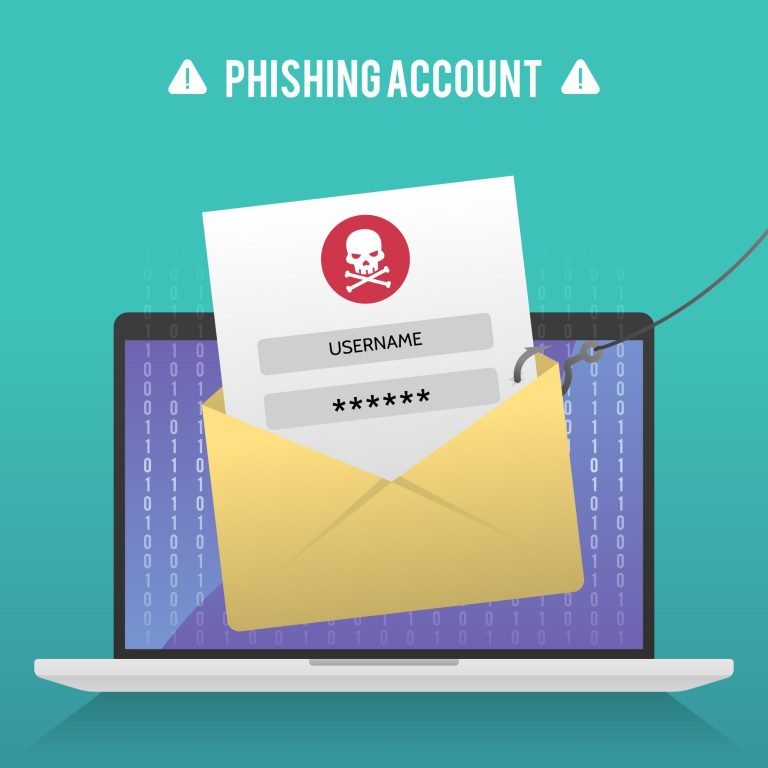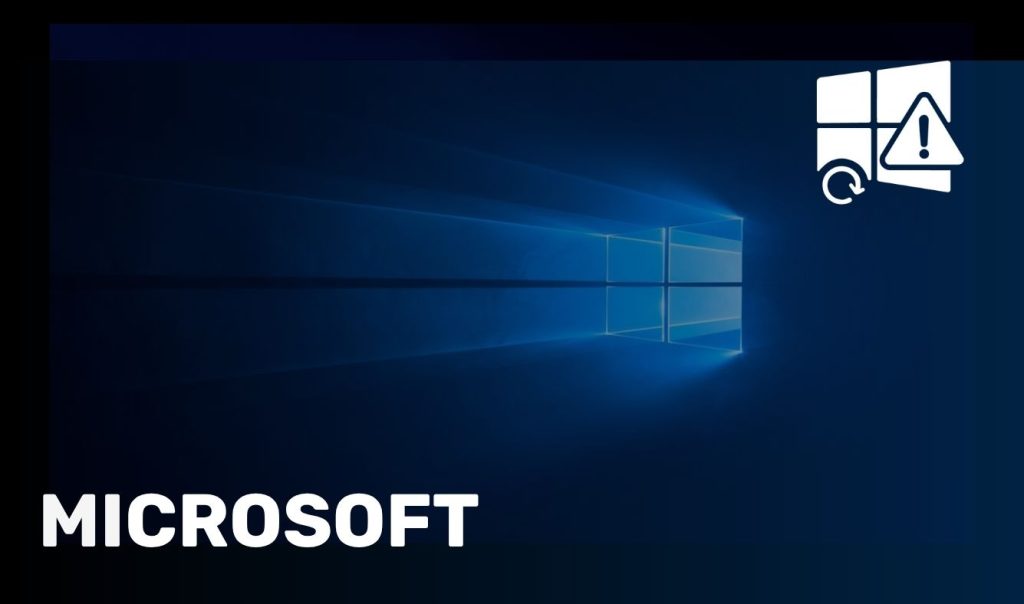Spam emails can severely disrupt any organisation, impacting everything from productivity to resource allocation and employee morale. To remain competitive, businesses must proactively protect themselves against increasingly sophisticated spam threats.
This blog post by Creative Networks explores the negative effects of spam on businesses and provides strategies to safeguard against these persistent threats.

What is Spam and How Does It Affect Businesses?
Spam refers to unsolicited and unwanted emails that flood inboxes, causing recipients to delete emails without reading them and potentially leading to missed opportunities. Spam emails can clog up inboxes, decrease productivity, and expose businesses to various risks.
Key Effects of Spam on Businesses:
- Decreased Productivity: Employees spend valuable time sorting through and deleting spam emails, diverting attention from essential tasks.
- Security Risks: Spam emails often contain malicious links or attachments that can introduce malware into business systems, compromising data security.
- Resource Drain: Managing spam consumes IT resources and requires robust filtering systems, increasing operational costs.
- Customer Distrust: Excessive spam can harm a company’s reputation, leading to decreased customer loyalty as people expect businesses to protect their data and privacy.
Spam represents over 50% of email traffic, making it a significant threat. Although spam filters can reduce the number of these messages, spammers continually find ways to bypass these defenses, necessitating constant vigilance from businesses.
Common Types of Spam
Spam emails can significantly impact a business’s productivity, security, and overall operational efficiency. Understanding the different forms of spam and how they pose varying levels of threats is crucial for protecting your business.
Here are some common types of spam emails and their potential risks:
- Phishing Emails:
Phishing emails are deceptive messages designed to trick recipients into revealing personal information, such as usernames, passwords, and financial details. These emails often appear to come from legitimate sources, such as banks, social media sites, or trusted companies.
Examples: Emails requesting password resets, confirming payment information, or updating account details.
- Fake Surveys and Competitions:
These spam emails entice recipients with promises of rewards, such as gift cards, cash prizes, or exclusive deals. The goal is to collect personal data under false pretenses.
Examples: Emails claiming you’ve won a prize and need to provide personal details to claim it, or surveys promising rewards upon completion.
- Unsolicited Offers:
These are spam emails that advertise dubious money-making opportunities, miracle products, or fake services. They often use high-pressure tactics to entice recipients to act quickly.
Examples: Emails offering unrealistic investment returns, guaranteed weight loss solutions, or free trials that require credit card information.
- Malware Attachments
Spam emails with malware attachments are designed to infect the recipient’s device with malicious software. These attachments can come in various forms, such as PDFs, Word documents, or executable files.
Examples: Emails with attachments labeled as invoices, resumes, or important documents that, when opened, install malware on the recipient’s device.

The Risks Associated with Spam
1. Confirmation of Active Email Address
Opening spam emails or interacting with them in any way confirms to the sender that the email address is active.
Consequences:
- Increased Spam: Once spammers know that your email address is active, you are likely to receive even more spam emails. This confirmation can lead to your email being sold to other spammers, multiplying the volume of unwanted emails you receive.
- Targeted Attacks: Knowing that the email is active can lead to more targeted phishing or spear-phishing attacks, where attackers craft more personalized and convincing emails to trick the recipient.
Example:
Clicking on a link to “unsubscribe” from spam often has the opposite effect, confirming to spammers that your email address is valid and frequently checked.
2. Malware Infection
Clicking on malicious links or downloading attachments in spam emails can lead to malware being installed on your device.
Consequences:
- System Compromise: Malware can give attackers control over your system, allowing them to steal data, monitor your activities, or use your device for further attacks.
- Data Loss: Malware can corrupt or delete files, leading to data loss. This is particularly devastating for businesses if critical business data is affected.
- Network Spread: Malware can spread across a network, infecting multiple devices and causing widespread damage within an organisation.
Example:
An email attachment disguised as an invoice or a legitimate document can install ransomware, which encrypts files on your system and demands a ransom for their release.
3. Data Theft
Responding to spam emails or clicking on phishing links can result in the theft of personal or financial information.
Consequences:
- Identity Theft: Personal information, such as social security numbers, addresses, and phone numbers, can be stolen and used for fraudulent activities.
- Financial Loss: Banking details and credit card information can be stolen, leading to unauthorized transactions and financial loss.
- Business Impact: If business credentials are stolen, it can lead to a data breach, compromising sensitive corporate information and causing significant financial and reputational damage.
Example:
An email posing as a bank request for account verification can trick recipients into providing their banking credentials, which are then used to siphon funds.
4. Distributed Denial of Service (DDoS) Attacks
Information obtained through spam can be used to launch DDoS attacks, which overwhelm your network bandwidth and cause significant downtime.
Consequences:
- Operational Disruption: A DDoS attack can cripple business operations by making online services unavailable, affecting everything from customer transactions to internal communications.
- Financial Impact: Downtime caused by DDoS attacks can lead to lost sales, diminished productivity, and potential contractual penalties.
- Reputational Damage: Frequent or prolonged service outages can damage your business’s reputation, leading to lost customer trust and decreased brand loyalty.
Example:
A spam email may collect enough information to exploit a vulnerability in your network, leading to a DDoS attack that takes down your website for hours or even days.
Mitigation Strategies
To mitigate these risks, it’s essential to incorporate comprehensive spam management into your cybersecurity strategy:
- Email Filtering: Use robust email filtering solutions to detect and block spam before it reaches your inbox.
- Employee Training: Educate employees about the dangers of spam and how to recognize suspicious emails.
- Two-Factor Authentication (2FA): Implement 2FA to add an extra layer of security to email accounts.
- Regular Updates: Keep all software, including email clients and security programs, up-to-date to protect against known vulnerabilities.
- Data Backup: Regularly back up important data to mitigate the impact of data loss due to malware or other cyber threats.
How to Identify Spam Emails
Identifying spam emails is the first critical step in protecting your business from potential cyber threats. Spam emails can lead to decreased productivity, security breaches, and financial loss.
Here are some comprehensive guidelines to help you recognise spam:
Too Good to Be True Offers
Emails that offer unrealistic deals or large sums of money are often too good to be true. These emails aim to lure recipients with promises of incredible offers that require minimal effort or investment.
Signs:
- Excessive Rewards: Offers of large sums of money, expensive gadgets, or luxurious vacations.
- Urgent Language: Phrases like “Act Now,” “Limited Time Offer,” or “Urgent Response Needed” are common in these emails.
- Unfamiliar Senders: Emails from unknown sources or companies you’ve never interacted with.
Example:
An email claiming you’ve won a lottery you never entered or a message offering a high-paying job that requires little work.
Requests for Sensitive Information
Legitimate organisations will rarely ask for sensitive personal or financial details via email. Be wary of any email that requests such information.
Signs:
- Personal Information: Requests for social security numbers, passwords, or bank account details.
- Financial Information: Emails asking for credit card numbers, banking PINs, or payment confirmations.
- Unverified Sources: The email might appear to be from a reputable organization, but the domain is slightly altered or doesn’t match the official domain.
Example:
An email that appears to be from your bank asking you to verify your account details or reset your password.
Suspicious Behavior
Communications from someone acting unusually or making odd requests can indicate a spam email. These emails may come from known contacts whose accounts have been compromised or from entirely unknown sources.
Signs:
- Strange Requests: Asking for unconventional favors, such as buying gift cards or making unexpected wire transfers.
- Poor Grammar and Spelling: Many spam emails contain numerous typos and grammatical errors.
- Unfamiliar Tone: The language and tone used are inconsistent with how the sender usually communicates.
Example:
An email from a colleague asking for an urgent financial transfer or from an unknown sender requesting help with a personal matter.
Additional Red Flags
- Generic Greetings: Emails that use generic salutations like “Dear Customer” instead of your name.
- Unexpected Attachments: Unsolicited emails with attachments, especially if they are executable files (.exe), PDFs, or Word documents.
- Mismatched URLs: Hovering over links in the email shows a different URL than expected or an unfamiliar domain.

How To Prevent Spam Emails
Spam emails can be a significant threat to business operations, leading to decreased productivity, security risks, and financial losses. Implementing preventive measures can significantly reduce the risk of spam-related issues.
Here are some comprehensive strategies to protect your business from spam emails:
1. Use Email Filtering Software
Email filtering software is designed to detect and block spam before it reaches your inbox. These filters use algorithms and heuristics to identify spam characteristics, such as suspicious subject lines, keywords, and email addresses.
Steps to Implement:
- Choose the Right Software: Select robust email filtering software that suits your business needs. Popular options include SpamAssassin, Barracuda, and Microsoft Exchange Online Protection.
- Configure Filters: Set up custom filters to block emails from known spammers and suspicious domains. Adjust sensitivity settings to balance between blocking spam and allowing legitimate emails.
- Regular Updates: Ensure the filtering software is regularly updated to recognize the latest spam techniques and threats.
Benefits:
- Reduces the volume of spam emails.
- Protects against phishing attempts and malware.
- Improves overall email security.
2. Employee Training
Regular training helps employees recognize and handle spam emails effectively. This training should cover cybersecurity best practices and the latest phishing tactics.
Steps to Implement:
- Schedule Regular Training: Conduct training sessions at least quarterly to keep employees informed about the latest threats.
- Interactive Workshops: Use interactive workshops and real-life scenarios to teach employees how to identify spam emails.
- Provide Resources: Offer resources such as checklists and guides that employees can refer to when they encounter suspicious emails.
Benefits:
- Empowers employees to recognize and avoid spam.
- Reduces the likelihood of falling victim to phishing attacks.
- Enhances overall organizational security culture.
3. Stay Skeptical
Encourage employees to adopt a healthy skepticism towards unexpected emails, even if they appear genuine. Always double-check the authenticity of the sender and the content.
Steps to Implement:
- Verify Senders: Teach employees to verify the sender’s email address and domain before taking any action.
- Check for Red Flags: Look for signs of phishing, such as generic greetings, urgent requests, and suspicious links.
- Hover Over Links: Instruct employees to hover over links to see the actual URL before clicking.
Benefits:
- Reduces the risk of falling for phishing scams.
- Encourages cautious and deliberate email handling.
- Helps identify and block fraudulent emails.
4. Avoid Clicking Links in Spam
Clicking on links in spam emails can lead to malware infections and phishing scams. Employees should be trained to avoid interacting with suspicious emails.
Steps to Implement:
- Delete Suspicious Emails: Instruct employees to delete any emails that appear to be spam or phishing attempts.
- Report Spam: Establish a protocol for reporting spam emails to the IT department for further investigation.
- Use Preview Panes: Encourage the use of email preview panes to view content without fully opening the email.
Benefits:
- Prevents malware infections and phishing scams.
- Reduces the likelihood of spreading malicious links within the organisation.
- Maintains a clean and secure inbox.
5. Use Trusted Antivirus Software
Antivirus software helps detect and prevent malware infections from spam emails. Ensure all devices have up-to-date antivirus software to protect against the latest threats.
Steps to Implement:
- Select Reliable Software: Choose reputable antivirus software, such as Norton, McAfee, or Bitdefender.
- Regular Updates: Schedule regular updates to keep the antivirus definitions current.
- Automatic Scans: Enable automatic scans to detect and remove malware regularly.
Benefits:
- Provides an additional layer of security against malware.
- Detects and removes malicious software before it causes harm.
- Protects sensitive data and systems.
6. Limit Email Exposure
Description: Reducing the exposure of email addresses can help prevent spam. Only share your email address when necessary and use alternative accounts for non-critical activities.
Steps to Implement:
- Create Alternative Accounts: Set up secondary email accounts for activities like online shopping or newsletter subscriptions.
- Use Contact Forms: Replace email addresses on your website with contact forms to reduce exposure.
- Avoid Public Listings: Refrain from listing email addresses publicly on websites and social media.
Benefits:
- Reduces the likelihood of email addresses being harvested by spammers.
- Keeps primary email accounts secure and spam-free.
- Minimises the risk of receiving unsolicited emails.
Creating a Secure Environment for Business Communications
To protect your business from the potential risks of spam, it is essential to understand what spam is, how it can look, and how to implement best practices for monitoring and managing it. By taking proactive measures, you can build a safer environment for your business communications, ensuring that spam does not disrupt your operations.
Contact Creative Networks Today
Ready to enhance your business’s email security and protect against spam?
Creative Networks provides comprehensive IT solutions tailored to meet your needs. Contact us today to learn more about our spam management and cybersecurity services. Visit Creative Networks for more information and to get started.




